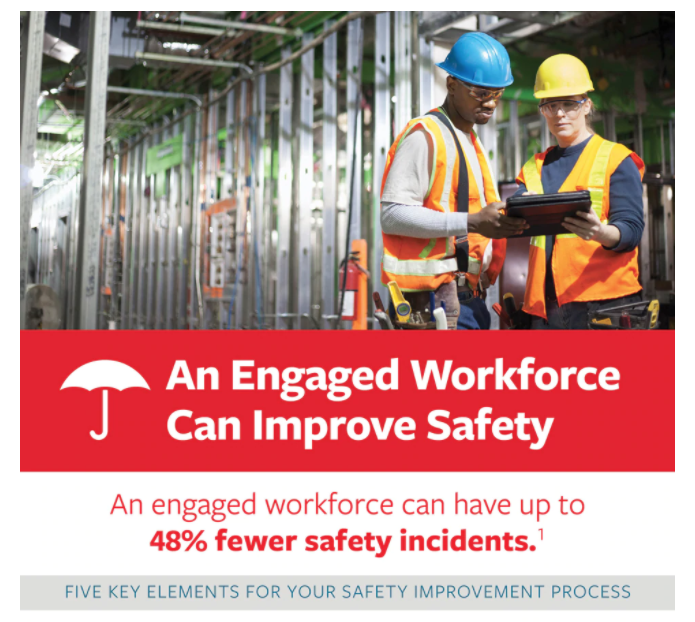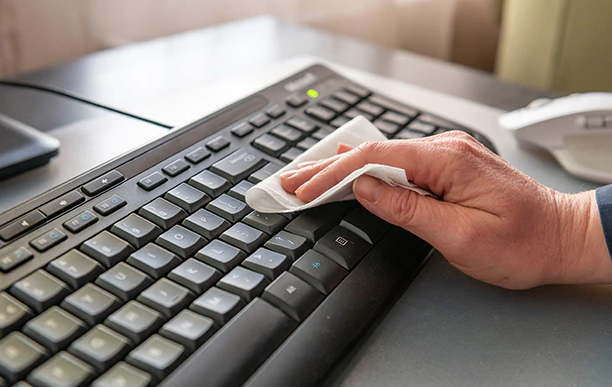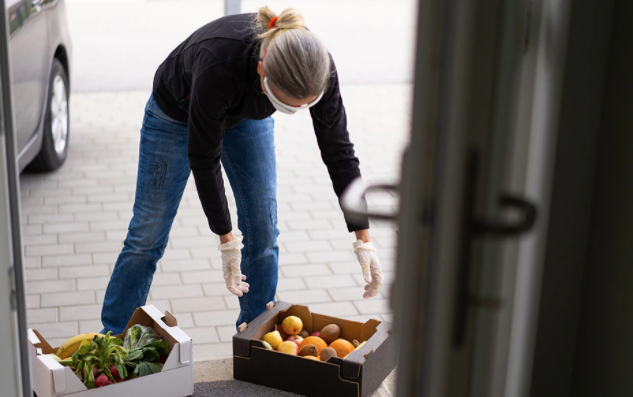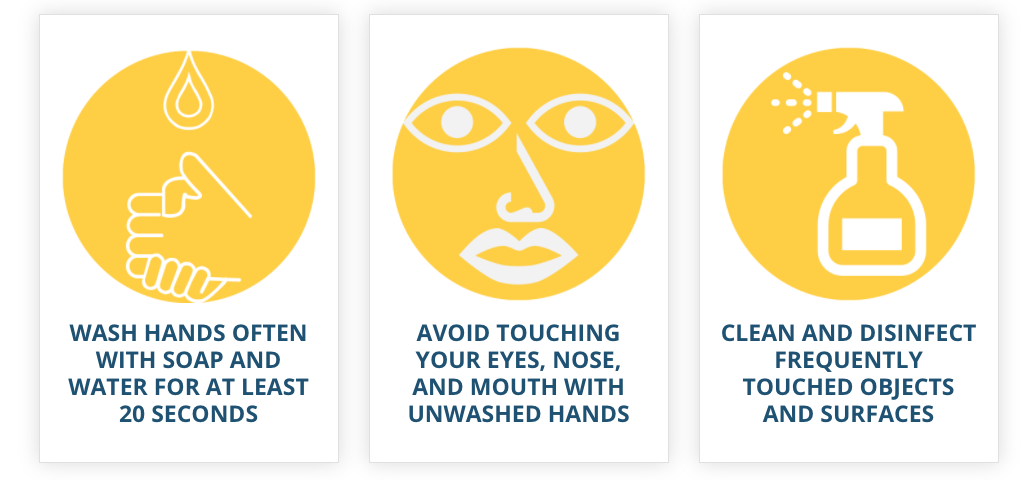Pros and Cons of Buying a House Now

When an unexpected natural disaster or state or local emergency interrupts your plans to start house hunting, all is not lost. While opportunities to get preapproved for a mortgage, meet with a real estate agent or tour homes for sale may be on the back burner, there are still ways you can work toward buying your dream home.
Why Making the Move Now May Be Right for You
House hunting during a time when your area or region is shut down can have its benefits. There may be less competition for the houses in the areas where you might be planning to move, and sellers may be more motivated to sell or more flexible on price. Starting your hunt virtually while sheltering in place can be beneficial if you find you have the time to shop online more thoroughly; that extra effort may give you an advantage in finding a home you love within your price range. Once the crisis passes, there may be more house hunters back on the market and prices may escalate due to a more competitive market that benefits sellers rather than buyers, so taking a few steps forward now could be the right move for you.
Get Preapproved for a Mortgage
When you eventually find the home of your dreams, you will want the seller to see you as a serious buyer. To do that, get a mortgage preapproval before you begin house hunting. It may be possible to get preapproved online, so consider looking into that option. Mortgage preapproval is a letter from a lender that indicates how much you are qualified to borrow from the lender, at a specific interest rate.
While it may not be possible to meet with a lender when an emergency situation exists, such as the coronavirus pandemic, you can get your information organized that will help your lender prepare your mortgage preapproval. Read More
7 Family Activities You Can Do While You’re Working From Home During the Coronavirus Pandemic

As the COVID-19 pandemic continues to compel millions of Americans to shelter in place and work from home (WFH) for the foreseeable future, the coronavirus social distancing requirements may be viewed as an opportunity to reconnect as a family.
If you’re self-quarantining or sheltering in place, here are seven family activities to help bide the time:
1. Train Your Dog
Does Fido beg at the table? Pull on the leash? Ignore those pleas to “sit,” “lie down” and “heel”? If so, now might be a great time for some hands-on training.
The American Kennel Club has a number of basic training videos1 you can use, and so does the Best Friends Animal Society.2 You can even head to YouTube for lessons from professional trainers.
For a better chance of successful training, make sure all family members are on board and participating in the training. Professional trainers suggest that you’ll need to be consistent in how you interact with your pup if you want the lessons to stick for the long haul.
2. Learn a New Language or Instrument
With the uncertainty of when the confining restrictions of the coronavirus pandemic will be lifted, it’s a good time to pick up a new skill. That might mean learning a new instrument, perfecting a new language or even trying a new art form, such as painting, dancing or singing.
You can even learn these new skills as a family. For language learning, you can turn to tools such as Duolingo, Babbel or Rosetta Stone. To pick up a new instrument, you might try Fender Play for guitar or flowkey for piano. Udemy, Yousician and Lessonface also offer a variety of music courses. Read more
6 Home Organizing Projects to Keep Your Children Busy While You’re Working From Home During COVID-19

While many of us are adjusting to social distancing during the coronavirus pandemic, parents are juggling their daily work activities with caring for their children. If you are working from home (WFH), you may have calls to make, emails to send or a video call to dial into while you try to keep your kids safely occupied.
There is a bright side to sheltering in place while working from home, and it’s not just the cozy family togetherness. You can get a jump on some of the home organizing projects on your to-do list, while helping your children learn how they can pitch in to help.
Get together as a family to brainstorm potential projects. Let the kids come up with some of their own, weighing in on what they want to do. Consider creating a schedule and come up with little rewards they might get ‒ such as extra screen time after finishing a big task or a project, one-on-one time with a parent, a walk around the neighborhood, or time playing catch.
Here are some organizing ideas that can help occupy the kids while you’re working from home during the COVID-19 pandemic.
1. Home Office
Looking for a fun way to get the kids to help clean your home office? Let them shred paper! Just note that it’s not recommended to recycle or toss financial documents, as these can contain personal information that can be used for identity theft.
Different documents should be held for different amounts of time, usually 1 to 7 years, though some should be kept forever.1 Double-check your shred pile for these types of documents before your kids start shredding them. If your children are old enough to use a shredder, give them a proper tutorial to make sure they know how to use it safely and supervise if necessary. Better yet, let them tear up the paper with their hands. Just make sure they know they have to pick up any bits of paper they drop and toss them in the trash.
2. Garage
Bikes, balls, holiday decorations, lawn equipment and gardening supplies might be, piled up in your garage, even with a car parked inside it. Let the kids get some fresh air while you’re WFH and sort through their outside toys. Have them decide what to keep and what to donate or throw away. Discard broken or nonworking items like deflated balls, broken sporting equipment or a cracked bike helmet. Discovering boxes of sidewalk chalk and the forgotten scooter can also give them something to do after organizing. Read more
10 Tips for Staying Productive When Working From Home During the Coronavirus (COVID-19) Pandemic

As concerns over the coronavirus (COVID-19) pandemic have prompted many shelter-in-place orders across the country, this measure has resulted in millions of Americans now working from home (WFH).
Though technology can ease many of the challenges associated with this work arrangement, staying productive while at home isn’t always easy. If you’re finding it hard to stay on top of your tasks or meet your deadlines while working from home, these 10 tips may help:
1. Work Out a Schedule With Your Family
With many schools having closed for the time being, more young children are now at home ‒ often trying to complete remote assignments from teachers, but without the benefit of in-person instruction. For parents who need to work while they’re home, caring for kids can make the struggle to stay productive even more difficult.
If you find yourself in this scenario, it’s important to establish a clear schedule for the entire family. If you have a spouse, perhaps one of you could work in the mornings and the other could work in the evenings. Or, you might consider waking up an hour earlier to have more time to get work done while the house is quiet. This could help alleviate some of your workloads later on.
2. Designate Your Own Workspace
Though it can certainly be tempting to work from your bed or couch, try to set up something more official. Maybe it’s a makeshift workspace in the dining room, or perhaps you have an actual desk or office space in your home. Ideally, your workspace should have a door, so you can shut out any distractions, and it should be stocked with all the supplies and equipment you may need close at hand, such as a computer, printer, paper, headphones, etc. You’ll want to avoid having to get up repeatedly to retrieve things you might need, as this will only cut down on your productivity. Read More
Business Continuity Planning in 4 Steps

There are many reasons why your company needs a business continuity plan. Having a strategy – before an event happens – helps to maximize the chance your business can recover while minimizing the loss of property, life and assets.
Developing your business continuity plan should be a thoughtful process resulting in a plan that can be beneficial to you if an event occurs.
Start by assembling a team of key decision-makers who will lead your continuity planning efforts. Senior management, team leaders and anyone with in-depth knowledge about business operations should be included.
Four Steps to Developing an Effective Business Continuity Plan
- Identify threats or risks
Understanding the risks that could leave employees, customers, vendors, property and operations vulnerable is fundamental. Threats can include, but are not limited to natural disasters, malicious attacks, power outages and system failures.Identify the risks most likely to occur based on historical, geographical, organizational and other factors. Then weigh the probability of each event against its potential impact to your business, as well as your readiness to respond.
- Conduct a business impact analysis
Identify the people, places, providers, processes and programs critical to the survival of your business. What functions and resources, if interrupted or lost, could impact your ability to provide goods and services or meet regulatory requirements? Read More
Creating a Safety Culture in the Workplace

Safety is more than a set of activities focused on accident prevention. It is a way of thinking about how you work, and it should be at the heart of any successful company. Weaving safety into your company’s mission, policies and procedures is a great way to demonstrate its importance and ensure its effectiveness across your company.
It should be about a shared vision that is expressed by core values and behaviors, where everyone walks the talk. By addressing unsafe acts and conditions before they become accidents, you build your safety culture.
Four Steps to a Safety Culture
The following four steps can serve as a starting point in driving safety across your business.
1. Evaluate risks. To understand how to create a safer workplace, you must first understand the risks you face every day. Each task and associated risk should be properly evaluated, and safety-based changes should be considered. Read More
How to Onboard and Train Employees into a Safety Culture

Once you attract and hire qualified job candidates to your open positions, having an onboarding and training process can help employees work safely and effectively. A continuous onboarding program will help orient employees not only to the functional details of employment, such as appropriate safety procedures, but also to the safety culture of the organization.
Employee retention strategies, such as onboarding and training programs, can also help protect the considerable time and expense invested in recruiting and hiring new employees. According to the Institute for Research on Labor and Employment (IRLE) at the University of California at Berkeley, the costs of replacing an employee are approximately 9% of an employee’s annual wage. In addition to any lost productivity and institutional knowledge, those costs include recruitment, selection, the costs of learning on the job and any separation costs.1
A Continuous Onboarding and Training Process
While some employers think of onboarding only for new employees, the process is also important for retaining and engaging employees over the full term of their employment. Existing employees, whether they are changing roles or returning to work after an injury in a transitional duty program, can benefit from an onboarding and training program that focuses on safety. Read More
An Engaged Workforce Can Improve Safety

Businesses are finding out that employee engagement can help reduce the frequency of workplace injuries.
It all starts with a strong safety program using a systematic process to identify and control workplace hazards, as well as an ongoing focus on the health and wellness of your employees.
There are a number of key elements to a safety improvement process. The focus should be on the identification of exposure, implementation of controls, as well as ensuring employees follow established safe work practices. Read More
Split Seconds | Distracted Driving Awareness
Each day in the U.S., nine people are killed and more than 1,000 injured in distracted driving incidents. Distracted driving is never safe and should never happen.
Tips to Help Keep Employees and Visitors Safe in Parking Lots

The parking lot. For employees and visitors to your business, it is an appreciated convenience. But slippery conditions, uneven surfaces and poor lighting can make parking lots and garages hazardous. A well-maintained and properly lit parking area can help keep people safe from potential injuries while also helping to deter crime.
Slips, trips and falls can result in serious injuries to visitors and the potential for lawsuits. Slips, trips and falls have a significant impact on the workplace as well, resulting in injured employees, missed time from work and business interruptions if critical employees are involved. These types of injuries to employees have continued an upward trend since 2011.1 Crime can also be an issue, with more than one in 10 property crimes occurring in parking lots or garages.2
“It’s important to know the particular risks of your area and take appropriate precautions to address facilities maintenance, seasonal weather hazards, past incidents and non-routine work hours, such as early mornings or late evenings,” says Reese Cann, a Travelers Risk Control safety professional.
In cooler climates, surfaces may need to be treated for ice and snow to reduce the risk of slips, trips and falls. In areas prone to crime, consider having security personnel in place to protect visitors and employees as well as their vehicles while left unattended. Employers can also promote safety awareness to encourage employees to be alert for vehicle motion or others in close proximity, as well as to avoid distractions such as a cell phone when walking to and from the office.
If you are an employer or property manager, here are some tips to help keep employees and visitors safe in parking lots: Read More




























